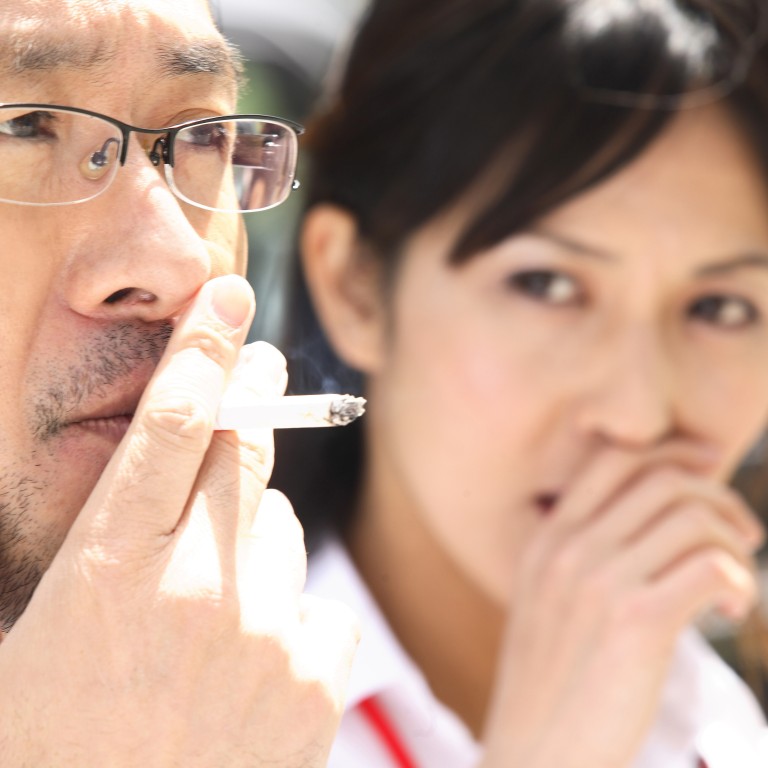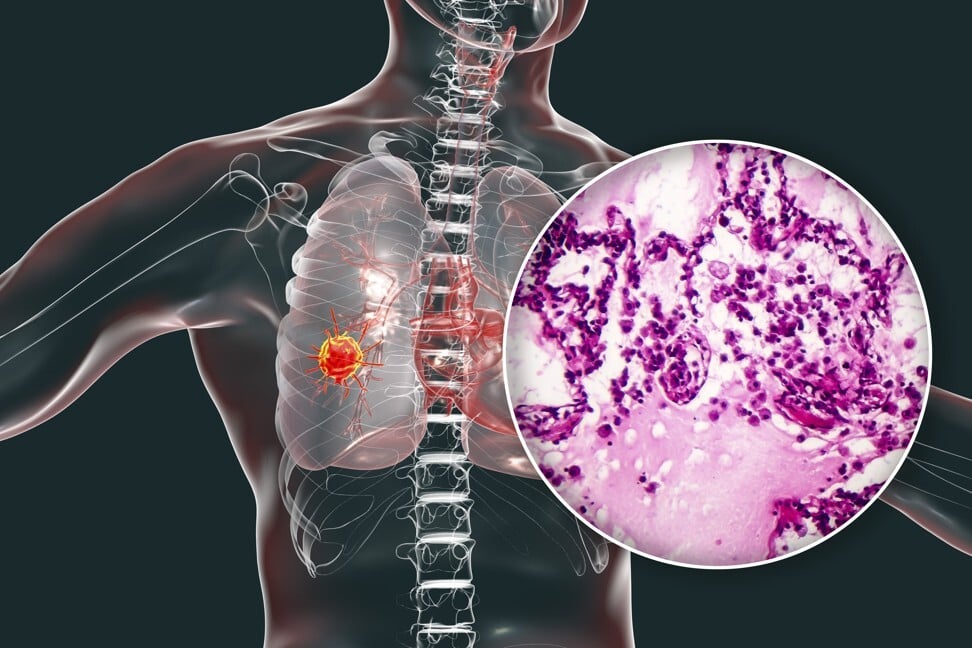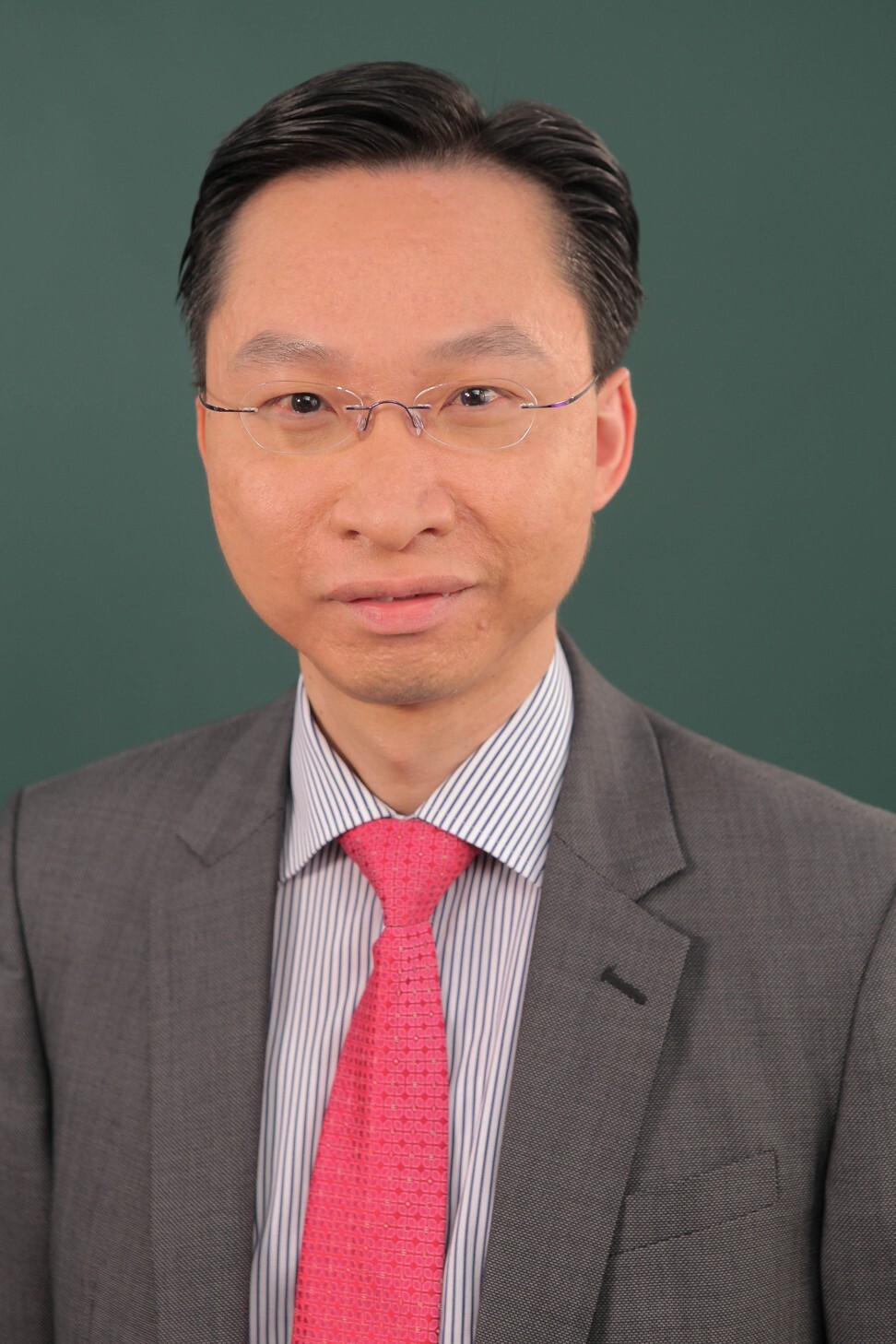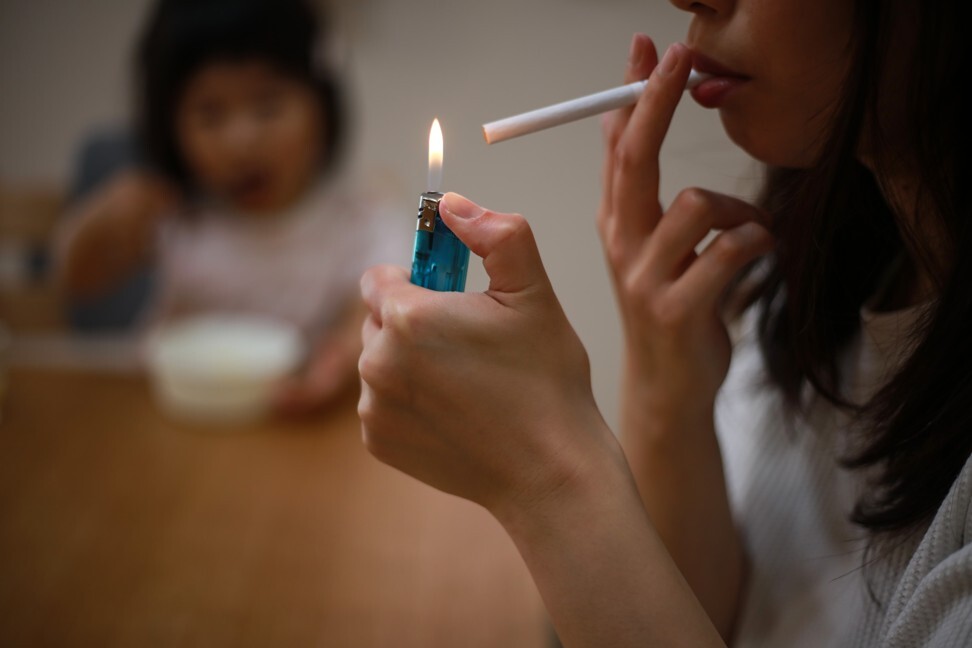
A lung cancer survivor – who breathed second-hand smoke at home – urges smokers to quit to save their families and themselves
- Non-smoker Mei Lai (whose husband smokes) was diagnosed with lung cancer and underwent an operation and gruelling chemotherapy
- Now she is training as a Hong Kong Cancer Fund volunteer, which helped her deal with the trauma of her diagnosis and treatment
For more than a decade, Mei Lai battled a chronic cough and sought treatment from Western and Chinese medicine experts. Yet the cough persisted – and eventually erupted into lung cancer.
An administrator at a private company in Hong Kong, Lai (who is not using her real name to protect her family’s privacy) had never smoked and considered herself in good health. Now in her 50s, she has been married for 28 years to a construction worker – who is a smoker. For years, she has asked him to quit. He has not. By telling her story, she hopes he and other smokers will reconsider their deadly habit.
In 2016, Lai coughed up blood at work, and visited a traditional Chinese medicine specialist. He was not alarmed by her condition, so she shrugged it off.
In 2017, a Western doctor ordered a CAT scan in light of her family history of lung cancer; her older sister and brother, non-smokers, had both had this disease in their 50s. But a 1cm long shadow on her lungs in the imaging did not prompt further investigation.

In 2018, still coughing, she sought another medical opinion. That led to a biopsy which revealed that Lai had stage-one lung cancer.
“I felt upset, but because I had some family history of cancer, I was kind of prepared for the news,” she said during a Zoom chat.
The lungs: how they work, and how coronavirus hurts them
During an operation to remove the tumour, doctors discovered another growth in her lungs, which put her in the stage-two category. Lai underwent four months of gruelling chemotherapy.
She quietly urges people to kick the smoking habit, and when she sees people smoking, she covers her nose and steers clear of them. “It’s not just about getting cancer,” says Lai. “There is nothing good about smoking, so don’t do it.”
Her understated appeal is backed up by the World Health Organisation in its campaign, 100 Reasons to Quit Smoking. Not only does it cost money, it affects smokers’ appearance, causes premature ageing and wrinkles, turns teeth yellow and making smokers’ breath, clothes and surroundings stink; it threatens their reproductive and overall health – and that of loved ones and family.

The WHO also reminds smokers that they have a greater risk of developing a severe case of Covid-19 and dying from it.
Lung cancer is the second most common cancer in Hong Kong – behind colorectal cancer – and it is the most deadly. The city registered 5,252 lung cancer cases in 2018, and the disease claimed 3,853 lives. Globally, tobacco use claims eight million lives a year, and is responsible for 25 per cent of all cancer deaths, the WHO estimates.
According to Dr James Ho Chung-man, vice-chairman of the Hong Kong Lung Foundation, a mix of genetic make-up and environmental factors – exposure to cancer-causing substances including air pollution, tobacco smoke – can cause lung cancer. “Largely still, a major environmental risk factor for lung cancer is cigarette smoking,” Ho says.
Chronic smokers who smoke 30 packs of cigarettes or more a year have a 10 times higher risk of developing lung cancer than someone who does not smoke. Their habit affects non-smokers around them.
Exposure to second-hand smoke may increase the risk of developing this disease by 10 to 20 per cent.
Detected early, the five-year survival rate for lung cancer is high, says Ho, 80 per cent or higher for those with a stage-one diagnosis. In other words, 80 or more out of 100 people with stage-one cancer are alive five years after their diagnosis.
I met stage-four lung cancer patients who didn’t have as much fear and seemed optimistic,” she said. “I thought, ‘how could they be so strong?
He notes, though, that many cases are not detected until the later stages, when the patient has obvious symptoms.
While Lai recovered after surgery and chemotherapy, the experience left an indelible imprint on her psyche, and she is particularly fearful that the cancer may recur.
In 2019, she discovered a mass in her leg. In April that year, she learned of the Hong Kong Cancer Fund (HKCF) and visited its centre in Tin Shui Wai, in the northeast New Territories, for support.

“I remember crying while I was there, and they connected me to a case worker,” Lai says. She also met HKCF clinical psychologist Marian Wong Men-heng.
With the centre’s help, Lai learned ways to ease her anxiety. Wong says the sessions “helped her to distinguish between thoughts and facts, and identify things she values in life, such as making a contribution to society, connecting with others and with nature, to shift her attention” to these activities. Reorienting her life ushered in more meaning, purpose and feelings of control. Fortunately, the mass in Lai’s leg turned out to be benign.
She has attended many classes offered by the NGO, including tai chi and yoga, a daily practice which helps her to relax. She also cycles and hikes regularly in the New Territories where she lives, to “stay present in my life”.

Lai has tapped into HKCF’s network of 20 peer-support groups for different cancer types, which have more than 15,000 members. Relating to other lung-cancer patients who went through a similar ordeal helped her feel more positive and less isolated.
“I met stage-four lung cancer patients who didn’t have as much fear and seemed optimistic,” she said. “I thought, ‘how could they be so strong?’”
She recently began training to become an HKCF volunteer herself. “I know when people get diagnosed [with cancer] they get very worried, so I’d like to be there for them to lessen their worries,” says Lai.
Killer facts about smoking and vaping: why do we still do it?
Lai’s spouse still smokes. “My husband doesn’t agree second-hand smoke led to my cancer, and it’s difficult for him to quit,” she says. However, when he lights up now, he does so in the toilet.
Ho advises non-smokers living with a smoker to encourage that person to quit. “It’s the best way to reduce the chance [of developing lung cancer] for everybody in the family,” he said. “And it’s never too late.”
Butt out to breathe easier
1. After just 20 minutes of quitting smoking, your heart rate drops.
2. Within 12 hours, the carbon monoxide level in your blood drops to normal.
3. Within two to 12 weeks, your circulation improves and lung function increases.
4. Within one to nine months, coughing and shortness of breath decrease.
5. Within five to 15 years, your stroke risk is reduced to that of a non-smoker.
6. Within 10 years, your lung cancer death rate is about half that of a smoker.
7. Within 15 years, your risk of heart disease is that of a non-smoker.
To donate to support HKCF’s free cancer services, call 3667 6333; for more information about its services, call the helpline at 3656 0800 or visit cancer-fund.org.

